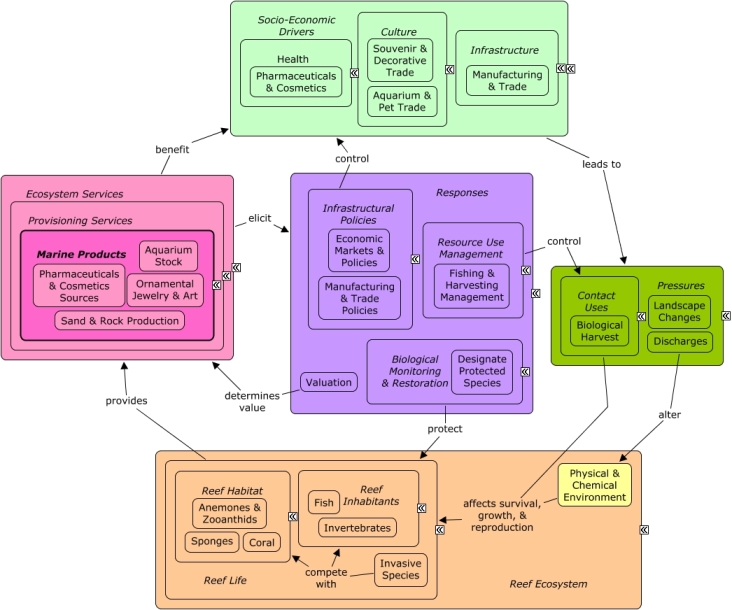ReefLink Database

Sand & Rock Production
Rock production is the processes by which calcified coral skeletons can be harvested to form rocks and building blocks. Sand production is the process by which calcified coral skeletons and invertebrate shells break down, forming sand can be used in construction, or sold as a product, for example in the aquarium trade.
CMap

CMap Description
A number of reef organisms, including stony coral, calcareous macroalgae, crustose coralline algae, crustaceans, mollusks, and bivalves, deposit calcium carbonate during growth to form hard skeletons or shells. As coral and other calcified organisms break down they provide sand which can be collected for sell, such as in the aquarium trade. Calcium carbonate deposition by coral contributes to the strong reef structure which can be harvested as rocks or building blocks. Many of the same economic sectors which benefit from reefs also create pressures on them through harvesting, as well as contributing to coastal development and pollution. Decision-makers can better understand the value of reef goods through valuation methods. Economic markets, including supply and demand, will influence the value of reef products.Citations
| Citation | Year | Study Location | Study Type | Database Topics |
|---|
Management Options
| Management Option | Description | Sources | Database Topics |
|---|---|---|---|
| Regulatory Review and Development: Evaluate Dredging Regulations | Dredging is oftentimes prohibited with certain exceptions. Dredging regulation often falls under other controls over the alteration of the seabed, discharging or depositing materials. At times dredging is necessary for navigation or other activities, necessitating .permitting mechanisms for allowing otherwise prohibited activities. Revising the regulations to help eliminate negative dredge-and-fill activities within a certain distance of corals would be beneficial because it would help promote the reestablishment of sensitive benthic communities. Reservoirs may require periodic dredging to remove sediment that may have collected. | NOAA Marine Sanctuary Program. 2007. Florida Keys National Marine Sanctuary revised management plan. National Ocean Service, Key West, FL. |
Beach & Land Formation; Beaches & Nature Parks; Biological Monitoring & Restoration; Coastal Engineering; Construction Codes & Projects; Dam Construction & Maintenance; Decision Support; Discharge Limitations; Docks & Marinas; Dredging Regulations; Dredging, Draining, & Filling; Ecosystem Monitoring & Restoration; Hydrologic Management; Mining; Mining Policies; Physical Damage; Point Source Discharges; Ports & Harbors; Provisioning Services; Resource Use Management; Sand & Rock Production; Security & Public Administration Policies; Special Use Permitting; Substrate; Transportation; Utility Line Construction & Maintenance; Water Transportation |
Laws
| Legal Citation | Purpose of Law | Management Organization | Database Topics |
|---|
